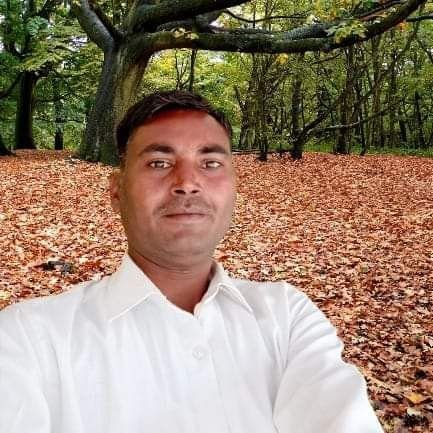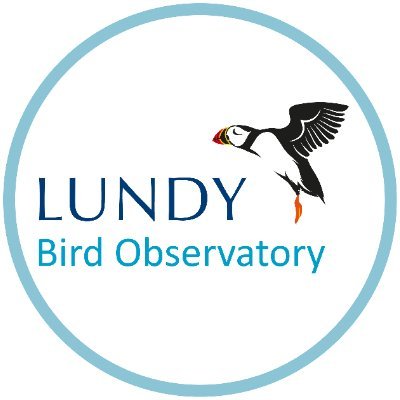
Alicia Curth
@AliciaCurth
Followers
4,139
Following
518
Media
92
Statuses
273
Senior Researcher Machine Learning @MSFTResearch , Statistician at ❤️ In search of statistical intuition for modern ML &simple explanations for complex things 👀
Joined September 2020
Don't wanna be here?
Send us removal request.
Explore trending content on Musk Viewer
Errejón
• 536543 Tweets
LINGORM MAJOR FANDOM
• 280803 Tweets
MARK LEE AT RALPHS NEW YORK
• 139092 Tweets
Ivan
• 110045 Tweets
期日前投票
• 106816 Tweets
Luka
• 99036 Tweets
علي النبي
• 75450 Tweets
ZeeNuNew At ONE BKK
• 74299 Tweets
Durk
• 49355 Tweets
Hayırlı Cumalar
• 47836 Tweets
Blink Gone
• 39495 Tweets
Alien Stage
• 38354 Tweets
GROW UP TO BE FREENBECKY
• 33165 Tweets
#それスノ
• 31981 Tweets
下請法違反
• 31307 Tweets
Mizi
• 26868 Tweets
結城さく
• 18909 Tweets
悪役令嬢の中の人
• 18393 Tweets
hyuna
• 10388 Tweets
Last Seen Profiles
Pinned Tweet
Why do Random Forests perform so well off-the-shelf & appear essentially immune to overfitting?!?
I’ve found the text-book answer “it’s just variance reduction 🤷🏼♀️” to be a bit too unspecific, so in our new pre-print ,
@Jeffaresalan
& I investigate..🕵🏼♀️ 1/n
15
225
1K
Super excited to finally share
@Jeffaresalan
& my
#NeurIPS2023
Oral: 🥳 — a slightly unconventional paper leading to a surprising and (shockingly) simple resolution of the tension between statistical intuition & double descent! 1/3
12
116
620
Part 2: So why DO Random Forests work?! On this, I’ll have to disagree with Elements of Statistical Learning (my first time ever 💔)
EoSL says the success of forests should be understood as a consequence of variance reduction *alone*, but I think that’s not a good intuition 1/n
Why do Random Forests perform so well off-the-shelf & appear essentially immune to overfitting?!?
I’ve found the text-book answer “it’s just variance reduction 🤷🏼♀️” to be a bit too unspecific, so in our new pre-print ,
@Jeffaresalan
& I investigate..🕵🏼♀️ 1/n
15
225
1K
6
77
540
oh and P.S. I don’t think we will ever be able to top the level of creativity it took to come up with our 3D poster. Most successful arts&crafts project
@Jeffaresalan
or I have ever been involved in 🙏🏻
2
12
174
Every StatML intro class covers complexity-error U-curves, so
@Jeffaresalan
& I asked ourselves whether the info from these classes is enough to explain double descent too? Our
#NeurIPS23
paper does a roundtrip of The Elements of Statistical Learning and answers “Yes”! Long🧵1/n
4
23
156
Addendum — if you take away just one thing from this thread, it should be:
Machine learning isn’t some kind of magic that defies the laws of statistics! I believe fundamental concepts from classical statistics will (probably) be “all we need” to understand modern ML!!
BUT… 1/3
2
11
140
Economists seem to LOVE synthetic control methods, so during my MSR internship with
@javiergonzh
we wanted to understand whether we could use them for survival analyses (v prevalent in medicine) too? Delighted that our answer (“It’s complicated!”) was accepted
@Conf_CLeaR
… 1/n
3
29
140
P.S.: Exciting for me as an ex-econometrician, this project also meant I finally got to learn what‘s behind all that ✨ synthetic control magic ✨🕵🏼♀️
My lukewarm (?) take: no magic, just some linearity assumptions* doing v heavy lifting in the background 🫢
Economists seem to LOVE synthetic control methods, so during my MSR internship with
@javiergonzh
we wanted to understand whether we could use them for survival analyses (v prevalent in medicine) too? Delighted that our answer (“It’s complicated!”) was accepted
@Conf_CLeaR
… 1/n
3
29
140
3
18
117
If you missed us in New Orleans but wanted to hear
@Jeffaresalan
& myself talk about (literal and figurative) U-turns on double descent, it seems that NeurIPS has made all recordings of Orals publicly available!🥳 Find us at minute 35:15 in this recording:
2
10
110
Excited to be back at
#icml
!☀️Find me floating around or come chat to me &
@Jeffaresalan
about our integrated attempt at understanding deep double descent, grokking, linear mode connectivity & differences between gradient boosting and neural nets on Friday at the HiLD workshop!🤓
0
7
105
I am going to Honolulu and I’m bringing … 3 posters!!!🤯🥳🌺 beyond excited & happy that lots of hard work paid off — but also feeling very lucky to have had great coauthors 🤗 as well as the most engaged set of reviewers *and* ACs I’ve seen so far! See you in July
@icmlconf
☀️
Incredibly proud of what my students have achieved with our contributions for
#ICML2023
! We will present a range of our intensive work on causal deep learning, clinical trials, treatment effect estimation, synthetic data and deep learning for tabular data:
4
5
46
2
3
77
brb just quickly recharging the batteries en route to
#NeurIPS2023
to get ready for the highlight of my academic year 🙆🏼♀️☀️ Next up: beyond excited to present our work on double descent with
@Jeffaresalan
as an oral in the first conference session on Tuesday! See you 🔜 NOLA 😎
0
1
71
Been sitting on this for a while now, but we are almost camera-ready so I can finally share: started a new research thread w/
@Jeffaresalan
earlier this year!! Our joint paper goes down a surprising rabbit hole & got rewarded with a NeurIPS Oral!🤯🥳 (Paper dropping next week🔥⏳)
2
4
67
It’s finally time: tomorrow
@Jeffaresalan
& I will be presenting our
#NeurIPS2023
paper on a surprisingly simple resolution to double descent in Oral session 1D at 10:30am in room R06-09 (level 2) 🥳 Beware: it’s a little trek to get to the room (upstairs), don’t miss it 😉
Super excited to finally share
@Jeffaresalan
& my
#NeurIPS2023
Oral: 🥳 — a slightly unconventional paper leading to a surprising and (shockingly) simple resolution of the tension between statistical intuition & double descent! 1/3
12
116
620
1
5
53
Another year, another amazing
@Conf_CLeaR
!! Had only one complaint last year (the weather on the conference hike…) and even that was perfectly arranged this time☀️
Personal takeaway: small, focused ML conferences are so so great — esp for PhD students & for finding community!
Had the absolute best time at
@CLeaR_2022
in Tübingen the last few days! From great talks & papers to great people, great organisation & great food, this conference had everything I could have hoped for 😍 (except for maybe great weather… ) Really can’t wait for
#CLeaR24
🤓
1
2
39
1
4
53
I’ve spent the last 1.5 years working with the amazing
@Jeffaresalan
on understanding modern ML phenomena, questioning everything we know about statistics in the process. The above is probably one of my biggest yet simplest takeaways!
More here:
19/19
3
6
54
Beyond excited to share that the first paper of my PhD with
@MihaelaVDS
, on estimating conditional average treatment effects using meta-learners and neural nets, was recently accepted for publication at
#AISTATS2021
!
Paper:
Code:
2
2
43
In other news: just interrupting the usual stats/ML coverage to share completion of my final
@Cambridge_Uni
bucketlist item — being part of
@clarehall_cam
’s first ever women’s crew to win blades in Lent Bumps last week 😱💪🏻 is that Cam telling me it’s time to graduate soon…?🤔
2
0
41
Fun fact: when
@Jeffaresalan
& I fell down the double descent rabbit hole, we were actually looking into another question entirely. Why do simple ensembles continue to work so well in practice?! We learned a lot about Random Forests on the way & have now come full circle: ⬇️🚨👀
0
1
43
Delighted ☀️ to be in Valencia this week to present our paper on heterogeneous treatment effect estimation in the presence of competing risks 🙌🏻😎 I’m extra excited because I FINALLY get to attend
@aistats_conf
in person-it’s where my first PhD paper was published back in 2021 🤓
Excited to share the next chapter in my saga on heterogeneous treatment effect estimation (aka my PhD) — to be presented at
@aistats_conf
in April — which features some interesting new characters: competing events! () 1/n
1
0
32
0
2
40
Had the absolute best time at
@CLeaR_2022
in Tübingen the last few days! From great talks & papers to great people, great organisation & great food, this conference had everything I could have hoped for 😍 (except for maybe great weather… ) Really can’t wait for
#CLeaR24
🤓
1
2
39
Super excited to share that I’ve not only had my first ever
#NeurIPS
paper accepted, but also my second (joint with C. Lee) and third (led by
@QianZhaozhi
) 🥳🤯 Finished my first year with
@MihaelaVDS
on a high note!🥳
I'm still processing our
#NeurIPS2021
results—12 papers accepted! All I can say is THANK YOU to our superstar lab members for your brilliance and dedication. So proud of you all! Details here:
9
10
220
1
1
38
After two years of gathertown, the day has finally come: it’s time for the first in-person presentation & poster of my PhD 🥳 I’ll be presenting at 5:35pm (Room 318) with poster session 6:30-8:30pm —come by if you’d like to chat about imputation (or anything else)!🤓
#ICML2022
Second in line at
#ICML2022
are Daniel Jarrett,
@BCebere
, Tennison Liu,
@AliciaCurth
& I: HyperImpute, a generalised iterative imputation framework. Missing data is a big problem and here, we present THE state-of-the-art tool that can help solving it! 2/2
0
1
11
4
4
38
I have spent *tons* of time in the last couple of years with
@MihaelaVDS
trying to find good benchmarks to evaluate (heterogeneous) causal effect estimators — and am still not really satisfied with what we’ve got (see e.g. our NeurIPS21 critique ) 🥲 …
3
3
36
What drives the relative empirical performance of ML algorithms for CATE estimation?
Sometimes it's simply the choice of benchmark dataset! With
@MihaelaVDS
, I wrote about this for the
#ICML2021
Workshop on Neglected Assumptions in Causal Inference happening tomorrow.
1
6
36
Want to hear about the next stop on our journey into understanding modern deep learning phenomena? Come find
@Jeffaresalan
& myself in the poster sessions at 10:00 and 15:30 at the workshop on high-dimensional learning dynamics
@icmlconf
in Straus 2 tomorrow! 🙌🏻
#ICML2024
Excited to be back at
#icml
!☀️Find me floating around or come chat to me &
@Jeffaresalan
about our integrated attempt at understanding deep double descent, grokking, linear mode connectivity & differences between gradient boosting and neural nets on Friday at the HiLD workshop!🤓
0
7
105
3
1
35
Excited to share the next chapter in my saga on heterogeneous treatment effect estimation (aka my PhD) — to be presented at
@aistats_conf
in April — which features some interesting new characters: competing events! () 1/n
1
0
32
If you’ve ever wanted to hear me rave about statistics for an hour, I’ve got a belated Christmas present for you: 🎁
Had a great time chatting to
@AleksanderMolak
about causality, double descent, stats and my journey into ML research from econometrics! 🤓
A causal journey from Amsterdam to Cambridge and from potential outcomes to DAGs and back.
A new premiere today!
1/n
#causality
#causalAI
#causaltwitter
#machinelearning
#neurips
1
0
12
0
1
27
…Clinical Pharmacology & Therapeutic’s special issue on Machine Learning 🥳
Link: , with big thanks to my amazing coauthors Richard Peck, Eoin McKinney,
@weatheralljim75
&
@MihaelaVDS
🙌🏻
To briefly answer the question in the top-level tweet, .. 2/8
2
1
25
Super excited to be speaking about our work on using machine learning for discovering & understanding treatment effect heterogeneity at
@AIClubBioMed
this week 🤓
Next event alert! Join us on Thur 4th May to explore this month's theme: "Machine Learning for Clinical Decision Making". We have two exciting talks from Alicia Curth
@AliciaCurth
and Vincent Jeanselme
@JeanselmeV
, followed by pizza. See you there 👀
@TheMilnerInst
@CRUK_CI
1
9
16
1
0
25
Had the absolute pleasure of learning from the amazing
@dennisfrauen
about sensitivity analysis when he visited us in Cambridge over the summer to work on this paper! 🤓 Go check it out here: 🙌🏻
🚨New preprint: A Neural Framework for Generalized Causal Sensitivity Analysis
👉 We propose NeuralCSA: a
#neural
framework for generalized
#causal
#sensitivity
#analysis
/🧵
1
6
17
1
1
25
Aloha
#icml2023
, I'm excited for a big day full of posters!🌺 If you're interested to chat about all things treatment effects, come at 11am to discuss model selection with me (
#415
) & informative sampling with
@ToonVDSchueren
(
#514
), and at 2pm for adaptive trials (
#415
)!
0
2
24
First tweet, big news: just graduated
@UniofOxford
with a MSc in Statistical Science, received a prize by
@OxfordStats
for overall performance on the MSc AND joined the amazing
@MihaelaVDS
as a PhD student at
@FacultyMaths
! 2020 certainly saved all the good things for the end 🥳
3
2
23
Thanks to
@GoogleDeepMind
for ruining my pre-NeurIPS holiday with the tech bros, apparently
#gemini
is all they need
@Jeffaresalan
@JonathanICrabbe
0
2
23
Interested in our recent work on treatment effect heterogeneity?🤓Come chat during today’s
#NeurIPS
poster session at 4:30pm GMT/8:30am PST 🥳 (I’ll be bringing my Time-Turner to try being at multiple posters simultaneously 🪄🧙)
#NeurIPS2021
is off to a busy start! A total of 4 poster sessions later today for papers by lab members
@AliciaCurth
, Changhee Lee,
@QianZhaozhi
, Yao Zhang, and
@IoanaBica95
. Definitely worth a look for anyone interested in treatment effects! More info:
0
2
22
0
3
22
Next Monday (June 12, 4pm BST), our lab is hosting an inspiration exchange where I'll be presenting lots of our newest work on ML for personalized treatment effect estimation with
@MihaelaVDS
! 🤓🥳 More info about attending online:
1/3
1
2
23
I wrote CATENets back in the first year of my PhD (& it was the first “real deep learning” I ever did!), mainly to have a tool to understand & benchmark lots of existing (&new) methods using fair, comparable, implementations, so super excited that it actually (still) gets used 🥳
⭕ CATENets ()
Developed by
@AliciaCurth
- a researcher at van der Schaar Lab - the package offers a unique set of deep-learning based CATE estimators. From original architectures designed by Curth and van der Schaar (SNet, FlexTENet) to...
🧵 (7/n)
1
0
2
0
0
21
This is also my answer to last week’s big discussion on overfitting (I’m a little late😅): whether we should still worry about overfitting today really depends on which setting one is interested in (do train inputs reappear?), and on how models interpolate the training data! 15/n
1
0
20
I had a wonderful day yesterday chatting to
@AleksanderMolak
about causality, machine learning research and life more generally 😍 really cannot wait to see the final product of his visit, stay tuned 👀👀
Yesterday, I visited the Center for Mathematical Sciences at
@Cambridge_Uni
to talk with
@AliciaCurth
.
1/2
#CausalBanditsPodcast
1
1
20
0
0
19
I myself might be at home with big
#NeurIPS2022
-FOMO but fortunately the amazing
@IoanaBica95
&
@JonathanICrabbe
are in New Orleans to present & discuss our work on benchmarking treatment effect estimators 🥳— if you’re interested, you can catch them at todays poster session!🤓
Today at
#NeurIPS2022
in the Datasets and Benchmarks Track, we’ll be presenting our work on “Benchmarking Heterogeneous Treatment Effect Models through the Lens of Interpretability”
With:
@JonathanICrabbe
,
@AliciaCurth
,
@MihaelaVDS
🚩Hall J, poster
#1014
- 11a.m. to 1p.m.
1
4
39
0
0
17
Want to chat some more about ML for heterogeneous treatment effect estimation?🤓 Come join me at today‘s
#NeurIPS
datasets & benchmarks Poster session at 4:30pm GMT to discuss better benchmarking for CATE estimation 🥳🤗
Today's our lab's busiest day at
#NeurIPS2021
! A real variety of papers on show, with topics ranging from data imputation to fairness in synthetic data, understanding/empowering decision-making, benchmarking for treatment effects, and more! Details here:
0
3
14
0
1
16
Interested to learn more about our work on heterogeneous treatment effect estimation & competing risks (or anything else)?🤓Then stop by for a chat at our
@aistats_conf
poster at 16:30 (spot 79) today 🥳☀️
In the same session, we have
@AliciaCurth
& I theoretically analyse & empirically illustrate when and how competing risks play a role in using generic machine learning prediction models for the estimation of heterogeneous treatment effects.
1
0
3
0
0
13
A classical k-NN estimator cannot do that: a 1-NN estimator ALWAYS uses exactly 1 neighbor.
Many modern ML methods, however, implicitly do something different. Eg we showed recently that random forests can be 1-NN estimators at train time but k-NN estimators at test time… 13/n
1
0
15
Ready for Round 2!🤓 Today I’ll be presenting our new line of work on adaptive clinical trials at the ReALML workshop (Room 309), with spotlight talk after 11:40 and poster session at 17:05! 🥳 Stop by to discuss how to make clinical trials more efficient using ideas from ML! 🙌🏻
Next up will be
@AliciaCurth
, Alihan Hüyük & I with our contributions to the Adaptive Experimental Design & Active Learning in the Real World workshop (). Adaptively identifying good patient populations & good arms! This might transform clinical trials.2/2
0
0
1
1
1
13
If you’re looking for more entertaining content regarding our joint work on double descent (and more), my amazing coauthor
@Jeffaresalan
has got you covered…
0
0
12
Super happy to share that our paper on benchmarking practices in CATE estimation (), written in collaboration with D. Svensson &
@weatheralljim75
from AZ, also just got accepted to the new NeurIPS21 datasets & benchmarks track 🥳
⚠️2 more papers accepted to
#NeurIPS2021
, for a grand total of 14 for our lab! Congratulations to lead authors
@AliciaCurth
and
@AlexJChan
, whose papers have just been accepted to the Datasets and Benchmarks Track! Updated announcement here:
0
1
33
1
0
9
@TacoCohen
@ShalitUri
@WvanAmsterdam
We wrote about this at NeurIPS21 in the special case of CATE estimation () and came to the conclusion that good & varied simulations are indeed a way to go—but that reporting also needs to be more transparent in how some DGPs favor some models inherently.
1
0
7






















































































































